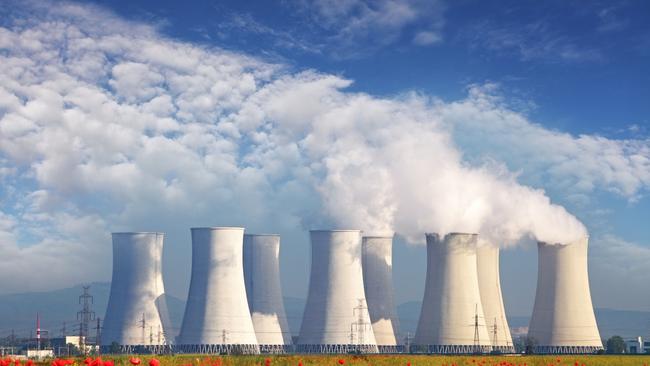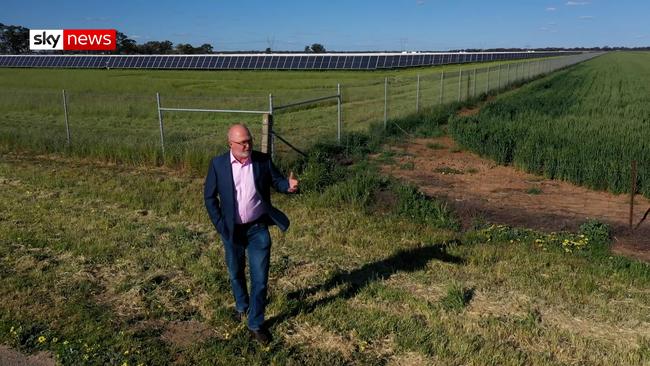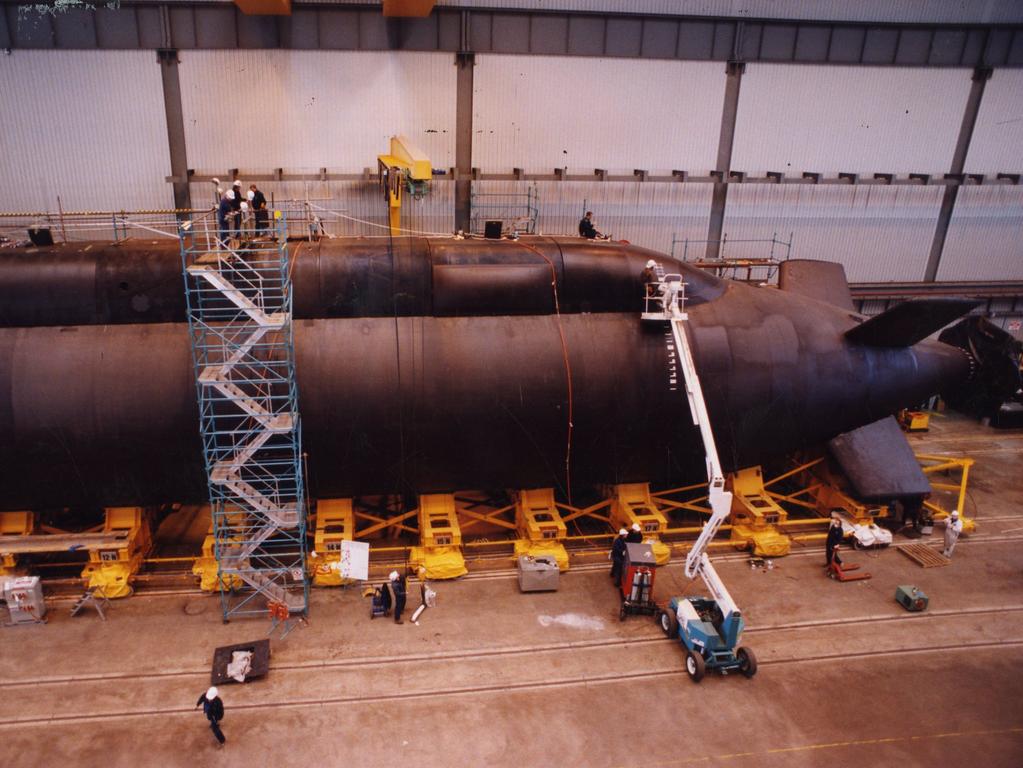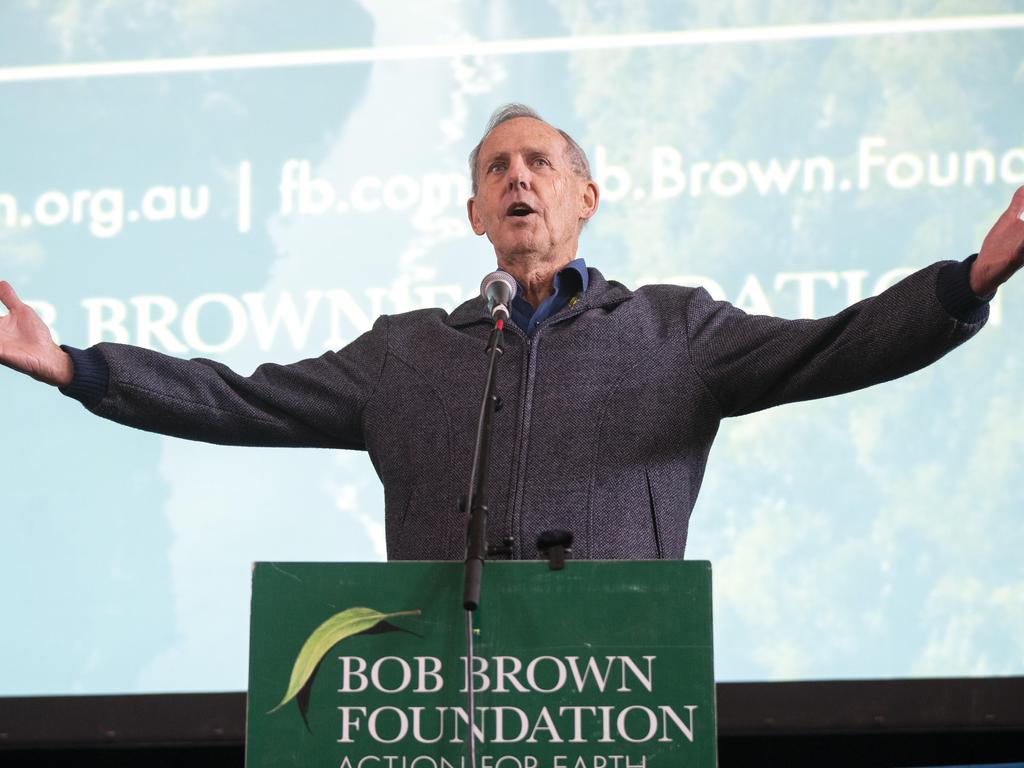If we’re serious about net zero, nuclear energy ban must end
Away from the meaningless pledges of Glasgow, those who rule out nukes are clearly more interested in political grandstanding than practical outcomes.

This means that in this country the Australian Labor Party and the Greens are interested in the climate debate primarily for political posturing, and that the Coalition, formally, is unwilling to challenge them – although perhaps as many as half of Coalition MPs think that should change.
Pursuing the goal of low-emissions energy without debating the only known source of reliable, emissions-free energy is like framing a budget without discussing taxation.
More than 100 wind farms with close to 3000 wind turbines are spread across our nation after investments totalling about $15bn were effectively underwritten in recent decades by government’s renewable energy target – yet still they deliver less than 10 per cent of our electricity. Think about the footprint and investment needed to multiply that threefold or close to tenfold – and consider also the exacerbation of reliability and price problems, and what you would do when the wind stopped everywhere at once.
One of the reasons Britain has been hit by an electricity supply and price crisis in recent weeks is that its wind farms have been halted by weeks of relative doldrums. True to form, some climate scientists are blaming it on global warming, calling this lack of wind a “global stilling”.
Large-scale solar might be more predictable but faces the same storage dilemma. Energy experts calculate that if we spent $19bn building more than 200 of those South Australian-style “world’s biggest batteries” we would store enough electricity to run the national grid for an hour.
The renewable enthusiasts – now prominent in both major parties – pretend this country can somehow muddle through to net zero with renewables and storage while we retire coal and gas. Snowy Hydro 2.0 will provide one significant storage installation at an outrageous cost; what too few people ask is not whether it is desirable or affordable to develop a renewables-plus-storage model, but whether it is even possible.
Let me save them the trouble – it is not. Otherwise it would be happening worldwide. Energy storage through batteries is costly, dirty, and desperately inadequate.
It is no accident that when Boris Johnson this week spoke about British plans for net zero he mentioned “big bets” on hydrogen, solar and hydro power but assured Brits there would be strong focus on expanding nuclear too “for baseload”. The world needs energy that is reliable.
As the world’s largest coal and gas exporter, Australia sends enough fuel overseas each year to produce three or four times our own total emissions. But the emissions saved overseas each year by countries using our uranium rather than fossil fuels is enough to cancel out our annual emissions.
Perish the thought we would use uranium ourselves. Yet this is where Australia has found itself, despite a long history with the nuclear industry. Uranium was first mined at Radium Hill, west of Broken Hill, in 1906 and processed in Hunters Hill, Sydney. It was sold overseas mainly for research, including to Marie Curie and Ernest Rutherford.

British nuclear weapons were tested at Maralinga, in outback South Australia, in the 1950s and 1960s, and mining continues in the Northern Territory and SA to this day. In the 1960s and 1970s, serious proposals were pursued at Jervis Bay in NSW and in SA to develop a nuclear reactor for electricity generation but they fell by the wayside, primarily because of an abundance of coal and gas.
The Lucas Heights research and nuclear medicine reactor was established on Sydney’s southern outskirts in the 1950s and still operates, with a new reactor commissioned in 2007. Political controversy over the weapons tests and mining ventures was intense during the Cold War, and into the 1980s and 1990s as Labor agreed to allow three uranium mines nationally.
The hangover has seen local governments declare themselves nuclear-free zones, and some state governments ban even uranium exploration. Bizarrely, nuclear energy generation was banned under federal legislation in 1998 through ill-considered parliamentary horse-trading when, apparently, nobody thought it would matter.
This is a strange and illogical position. We are the only G20 nation with a legal ban on nuclear energy – as the world’s third-largest exporter of uranium, fuelling nuclear energy globally, we reject it ourselves.
In recent months, researching and filming my Sky News documentary on this energy challenge, I have spoken to a range of experts and environmentalists here and overseas who insist nuclear power is both the green answer and the only answer to the net-zero emissions challenge.
“I believe Australia has to have a nuclear energy future,” says Barry Brook, professor of environmental sustainability at the University of Tasmania. “We are not ever going to get beyond about 50 per cent renewable energy and continue to have the type of energy use in a modern society that we have today, so where is the other 50 per cent going to come from? If it really is going to be zero carbon, then it is going to need to come from nuclear.”
Helen Cook is an Australian lawyer who has worked overseas for 14 years specialising in nuclear industry issues for major companies and national governments in the US, Europe and Middle East. Back in Sydney, and a new mum, she sees nuclear as fundamental to her daughter’s future: “If we’re going to move away from coal, and if we care about climate change, the only technology that we currently have today, which can replace that fossil fuel generation, is nuclear energy.”
When asked if net zero is achievable using renewables and storage, nuclear expert Adi Paterson says: “I don’t believe that it is possible.” Paterson trained in South Africa and the UK as a nuclear engineer and was chief executive of Australia’s Nuclear Science and Technology Organisation (which runs Lucas Heights) for 12 years until he left recently.
“If we want the future that we’re talking about, which is a future that is a low-carbon future, that honours the earth that we’re living in, and honours the future generations who will have to take over from us, we would absolutely have a nuclear future,” he says. And of Australia’s hopes for net zero by 2050 he says; “I think without nuclear, it’s impossible, and I think it just will become too difficult, and we will find out too late.”
Brook sees nuclear energy as the global warming silver bullet but understands the political impediments. “In my ideal world, we’d be doing something already, doing something meaningful, be having bipartisan agreement, we’d be looking at contracts, we’d be building our first reactors, and we’d be making that transition,” he says. “Every coal-fired power station that was retired would be replaced by a nuclear power station that was zero carbon, that would be an idea.”
According to Cook, getting rid of the legislative ban would be an important signal to the public that nuclear energy was not something to be demonised. “I also think that probably the prohibitions have created a level of political apathy in this country, where our leaders maybe haven’t had to engage or have chosen not to engage in this controversial subject of nuclear energy,” she says.
The South Australian royal commission into a nuclear industry in 2016 recommended the removal of the legislative ban as a signal to industry that proposals would be considered. Nationals senator and former resources minister Matt Canavan has signalled his intention to force the issue in parliament.
Small modular reactors are expected to dramatically improve the practicality and costs of nuclear power. They loom as the entry point for this country.
Globally, away from the glib lines, alarmist slogans and meaningless pledges of Glasgow, the world needs to spectacularly increase the amount of electricity it generates in coming years to lift billions more people out of poverty in Asia and Africa. And that is before considering the conversion of much of the developed world’s transport to electricity.
More electricity, available everywhere, regardless of the vagaries of wind or sunshine, without carbon emissions – this is the energy nirvana we aspire to. But there already is one form of power that meets those criteria, nuclear.
Australia’s net-zero politicians are either not serious, or too timid to test the reaction.
Chris Kenny’s Going Nuclear: The Clean Energy Debate airs on Monday, October 25 at 8pm AEDT on Sky News.







The test for those who are eager to sign up to a net-zero by 2050 carbon emissions target is whether they are open to discuss an increased role for nuclear energy. If they rule out nukes – rather than agree they must at least be considered in any discussion of a low-emissions energy mix – they clearly are more interested in political grandstanding than practical outcomes.